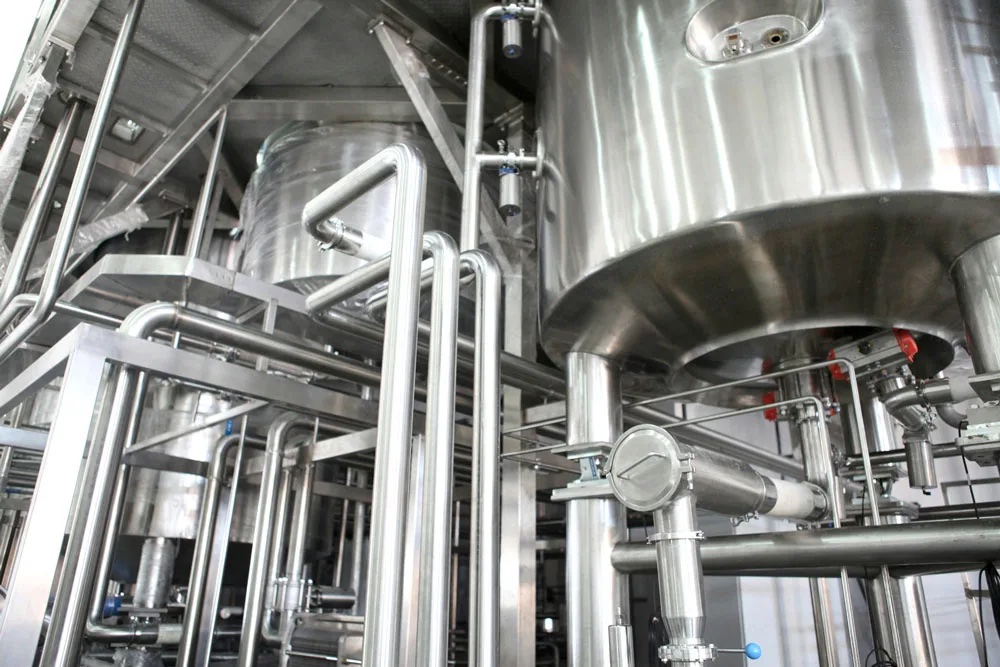The autonomous vehicle industry is dominated by talk of robotaxis, self-driving trucks, sidewalk delivery robots and passenger vehicles like Teslas with automated driving functions. You know, the sexy side of autonomy.
Not much attention has been paid to the type of autonomy Steer Tech, a Maryland-based AV startup, has been pursuing — something the company’s founder and CEO Anuja Sonalker calls “endpoint autonomy.”
Since it was founded in 2016, Steer has focused on providing high-level autonomy for valet parking, a bit of tech that it’s been quietly earning revenue on by selling it to automakers.
Steer is now expanding that use case into the commercial sector through a partnership with Dallas Fort Worth International Airport, which will demonstrate how an automated parking ecosystem can alleviate congestion in traffic pick-up and drop-off areas.
The pilot will combine low-speed automated valet parking, a supervisory parking management system and a digital curb management system. It will test passenger vehicles that have been outfitted with Steer’s AV software and sensor suite.
Steer wants to bring this ecosystem to the endpoint of the logistics supply chain.
“We are focused on the depot side while others are focused on the long haul, and you need both if you want to do end-to-end autonomy,” Sonalker told TechCrunch. “Nobody is going to solve everything. Everybody is going to master one area and then work with others to create that end-to-end ecosystem.”
Sonalker didn’t cut her teeth solving for low-speed, private-space operational design domains. The founder spent three years at R&D firm Batelle, where she headed its automotive cyber innovation unit, which was later spun out and then acquired by Honeywell. She then set up and led the North American operations of TowerSec, an Israeli automotive cybersecurity startup that was eventually acquired by Harman.
We caught up with Sonalker to talk about the importance of automotive cybersecurity, how automating the “endpoint” can make freight more efficient and why focusing on less glamorous tech can help you build better products.
The following interview, part of an ongoing series with founders who are building transportation companies, has been edited for length and clarity.
TC: Steer is the third startup you’ve been involved with, and the previous two were acquired. Is that the goal for this one?
Anuja Sonalker: With the previous ventures, I will say that the plan was not to get acquired, but that’s how the timing worked out. What I learned from the other previous startups was that the plan has to be bigger. You have to have a vision of where you’re going, and that vision has to be strong and able to resist any kind of upheavals, like a pandemic, in your way.
If there’s an acquisition, it will happen. You can’t stop it; it really is the timing. But I didn’t start with that goal. My goal here is to build a product. The last two startups were focused on automotive cybersecurity. This time, cybersecurity is a major part of the technology, but it is not the whole.
What do you think the biggest pain point is in automotive cybersecurity?
It has changed with time. When I started in this field, the problem really was denial and not realizing that there was a cybersecurity problem, so these vehicles were far more vulnerable. People were able to exploit those vulnerabilities and demonstrate attacks on vehicles that ranged from nuisances to being critical to safety. At the time, the ability to detect vulnerabilities was very important.
Then it changed to: “Okay, now that we have detected it, we have to do something about it.” It changed to prevention. The industry has gone through a tectonic shift in cybersecurity. Every automaker realizes that it’s not whether we are hackable or vulnerable — everything and everybody, given enough time and resources, is penetrable.
So it’s about figuring out that we are being attacked and how we can change that. The idea is to increase the internal resistance of your vehicles, and now the issue is really about designing the right amount of cybersecurity into your vehicles. Not too much, and not too little.
If you overdo it, you’re going to have an impact on system performance and system guarantees. Remember, these are all real-time systems. So I’m designing for the right adversary model and putting just enough effort to be commensurate with the risk of that asset.
What are the cybersecurity risks in the autonomous space you’re pursuing now?
I think the Trojanization of vehicles is the biggest issue. For most hackers, it’s not about the target they’re trying to breach; it’s about using that target as a springboard to something else. Their first target is usually something that’s an easy entry, but it’s only an entry point to get to the gold mine. We’ve seen that with SolarWinds, Home Depot, the nuclear plant this year and everywhere in every type of system.
Critical systems can get hacked through some smaller systems and smaller doors, whether it’s a supplier, a maintenance system or whatever. The same idea applies to this space, too. These vehicles are connected to the electric grid. That is a jump, and it’s not easy, but there is a dotted line here.
Some of these vehicles are connected vehicles, so they have common programs, which is another vector. Some of these vehicles are going all the way into a cloud and then from the cloud to other vehicles, and that’s an entry point. Now, you can have larger scale destruction, which is much bigger than just being a nuisance.
You’re clearly building Steer with an eye toward cybersecurity, but that’s not the main business. What are the challenges to autonomy in this last-mile adjacent space?
This space is what I call “endpoint autonomy.” It is part of the last mile, but it’s really the endpoint. Endpoint automation is when the vehicle comes in, nearly at the last one-tenth of the journey. The constraints are very, very different.
When you drive somewhere and get to the endpoint, your journey is now very different. Your speed drops because you’re not driving on a road anymore. You’re in a parking lot, hunting for a space, and your stress levels elevate because you’re anxious — you want to get this done because you’re here.
It’s the same with commercial fleets. Their goal in coming to the endpoint is re-fulfillment and then heading back out. So if you can quickly automate the endpoint of that journey, you get performance, operational efficiency and safety values from all of that.
Many accidents happen at low speeds in private spaces. A majority of all the body collision damage that insurance companies pay for occurs in parking lots and enclosed spaces. So when we consider safety, we can’t forget parking lots and private spaces, because some accidents happen there, too.
Have you tried to overlay your tech onto some other AV driver yet?
We’ve had substantial conversations with several AV companies, and quite a few are interested. Several have indicated that they will not get into this space because they have enough challenges in their space. For example, let’s talk about trucks — they’re still working on driving on roads at higher speeds before the trucks get into the depots or yards. They still have to work on the on-ramp and off-ramp piece.
So the combination will still take a little bit of time, but that won’t stop a fleet owner from saying they want piece A and piece B, because they still have a driver sitting in the truck anyway. I don’t think there’s any on-road autonomy that has fully eliminated the driver at all times, even though some have demonstrated without a driver in certain areas.
What we have demonstrated is, when the truck comes back into the depot, the driver can get out of the vehicle and go clock himself out. The tractor can drop the trailer and go and park or line up for fueling or maintenance check — all that can be automated.
More Transportation Founders
Co-founders of Ukrainian startup Delfast discuss navigating through a crisis
Tortoise co-founder Dmitry Shevelenko: ‘You can’t do too many things at the same time’
Waabi’s Raquel Urtasun on the importance of differentiating your startup
Exploring the many faces of sidewalk delivery robots with Cartken’s Anjali Jindal Naik
Plentywaka founder Onyeka Akumah on African startups and global expansion
Battery chemistry company Sila’s founder Gene Berdichevsky on the science of scaling up
Rad Power Bikes founder Mike Radenbaugh on fueling the e-bike revolution
Via’s Tiffany Chu on the importance of govtech for planning mobility ecosystems
Einride founder Robert Falck on his moral obligation to electrify autonomous trucking
Revel’s Frank Reig shares how he built his business and what he’s planning
Arrival’s Denis Sverdlov on the new era of car manufacturing
Refraction AI’s Matthew Johnson-Roberson on finding the middle path to robotic delivery
Veo CEO Candice Xie has a plan for building a sustainable scooter company, and it’s working
Outdoorsy co-founders detail how they expanded the sharing economy to RVs
Kodiak Robotics’ founder says tight focus on autonomous trucks is working
Zūm CEO Ritu Narayan explains why equity and accessibility works for mobility services
Autonomous freight companies often say they’re focusing on the long haul, because it’s a miserable job that’s hard to find truckers for. What is Steer’s logic for automating the endpoint, aside from safety?
It’s similar. We have a driver shortage, and logistics throughput has gone through the roof, especially with the pandemic and more people ordering things online. Significantly more goods are being moved.
If you could save an hour of a driver’s time — 30 minutes in the morning and 30 minutes in the evening — you can repurpose that time back on the road so they can be out there driving more or delivering more goods because they saved that time.
Commercial duty drivers are capped by the amount of hours they can drive. So you’re not eliminating that job, and neither are you eliminating the need to have that driver. You’re just saying that I can repurpose that time and have more goods delivered. It actually makes these logistics and delivery systems more efficient because you’re increasing the throughput.
What’s your path to market?
We have direct sales channels in the fleet space, so we are directly working with fleets to integrate the tech.
What about in the long term?
In the long term, joining forces with OEMs on the fleet side will have advantages, because that increases the scalability factor quite a bit.
On the passenger side, you can scale by an order or two of magnitude by teaming up with OEMs.
On the commercial side, I think you could go either way. You don’t need to team up with OEMs directly.
I haven’t seen any fundraise announcements from Steer. Have you raised funds?
We have, and we raised money when we needed to. We’re not currently fundraising. But as I learned from my previous endeavors, I always have my ear to the ground and opportunities are always welcome. You never know where your next scaling partner or your next growth capital will come in and suddenly turn on one of the revenue engines that you’ve planned or get some additional acceleration in.
Are you profitable? How are you funding your operations?
We are revenue positive and we are cash-flow positive. We have a strong balance sheet and good reserves. All of our operations today are actually run through our income in revenues. We support ourselves.
We’re hiring, too. We are a team of about 35 people and growing, rapidly hiring at all levels — technical, operations, etc. We want to probably double our size by next year.
What other changes do you expect to see in a year?
This is a game-changing year because we are operationalizing several customers and several sites simultaneously. At this point next year, I think that Steer’s use case, both on the passenger parking and logistics side, will be a mainstream, well-documented use case with case study numbers that we could share with the permission of our customers — just like how there’s reference for robotaxis, shuttles and freight use cases.
This is a very under-glamorized use case currently. There’s not a lot of talk about it, which I liked. It helped us as we built our business.
How has endpoint autonomy being “under-glamorized” been an advantage to you?
This has been advantageous because we were able to focus on increasing our customer base by engaging and providing value without having to overcome the marketing hype and unrealistic expectations that come with high-profile coverage.
Do you have any advice for founders who are interested in what might appear to be a saturated industry, like AVs?
My advice is to focus, focus, focus. Focus on the problem you are solving, on the value proposition you provide and to whom, and just go after that relentlessly. There will be a lot of advice from everywhere that will tell you to do many peripheral things. Try to avoid scope creep or broaden your scope. In the beginning, stay narrow till you get your MVP (minimum viable product).































Comment